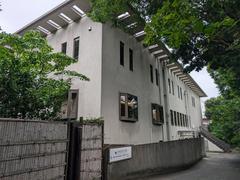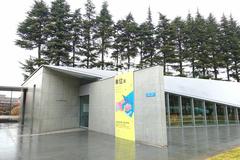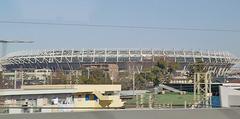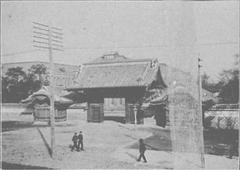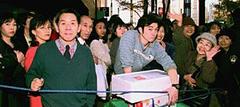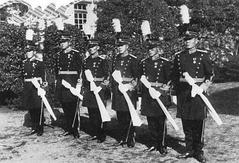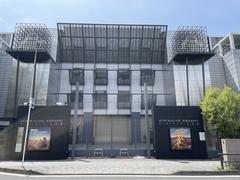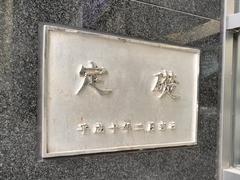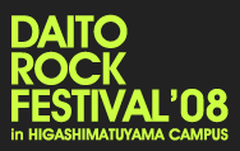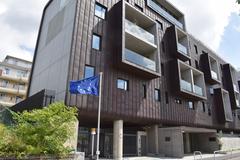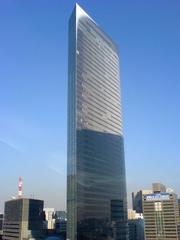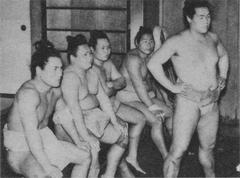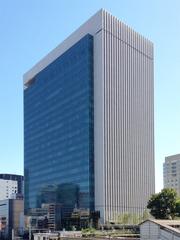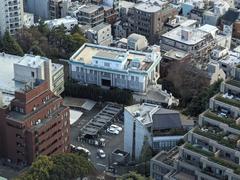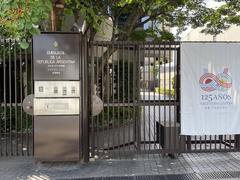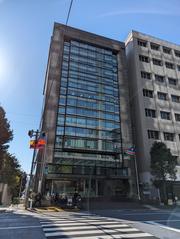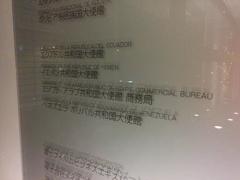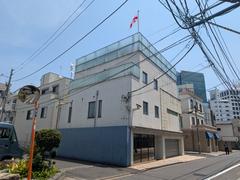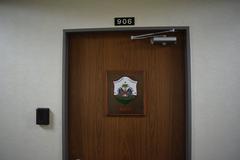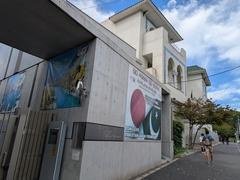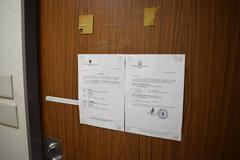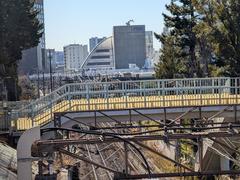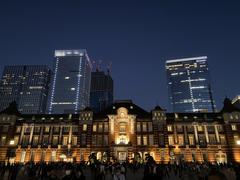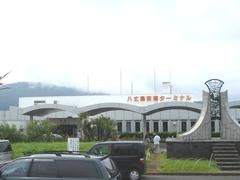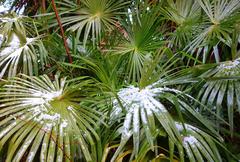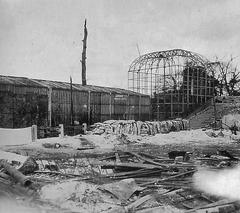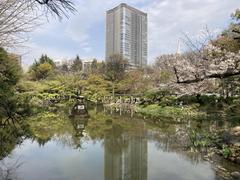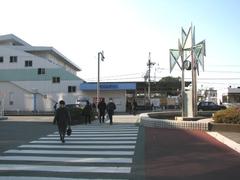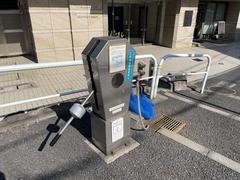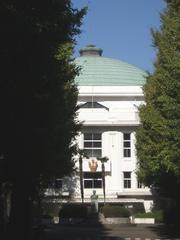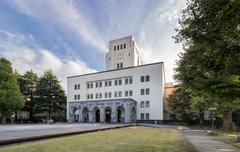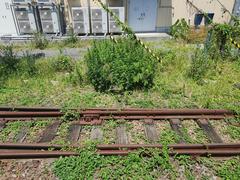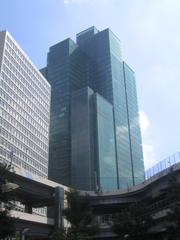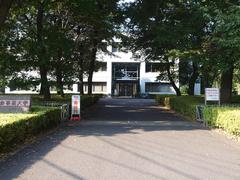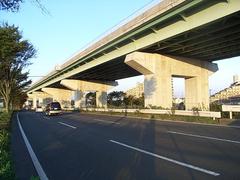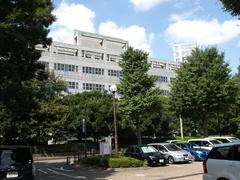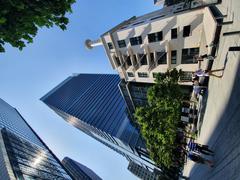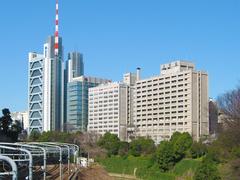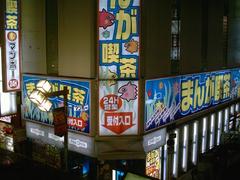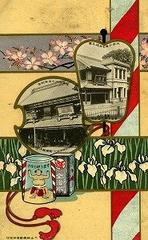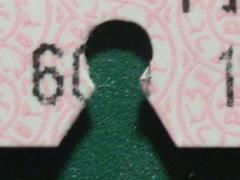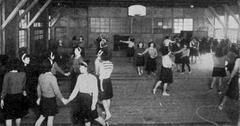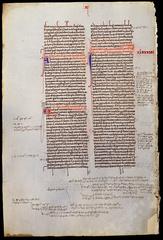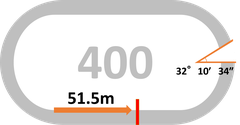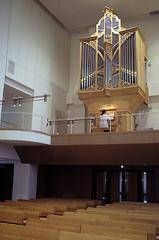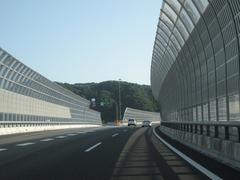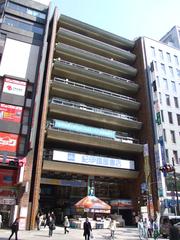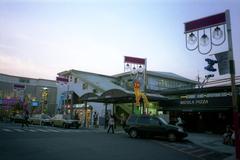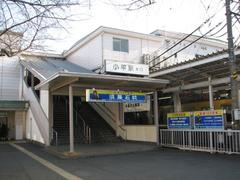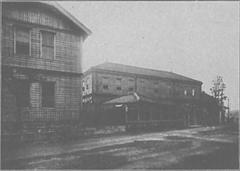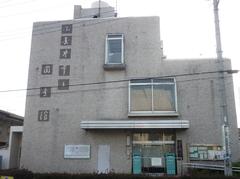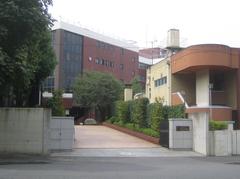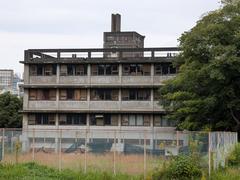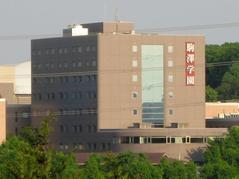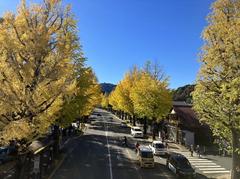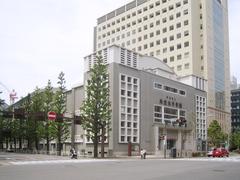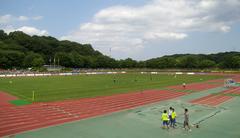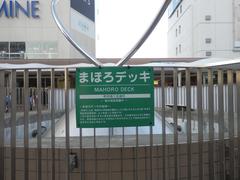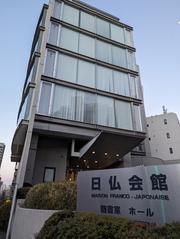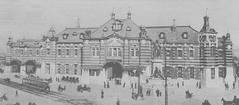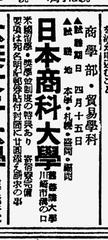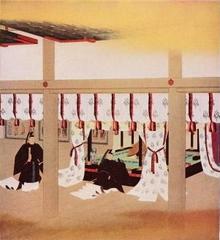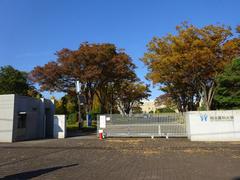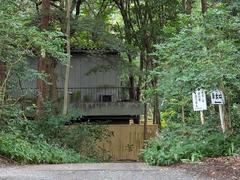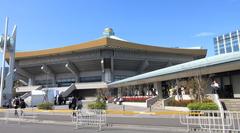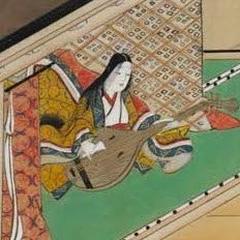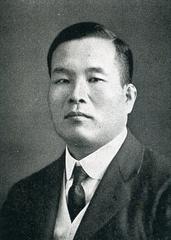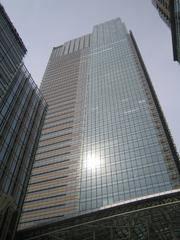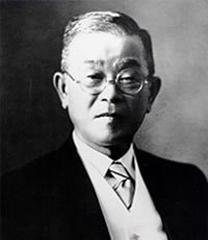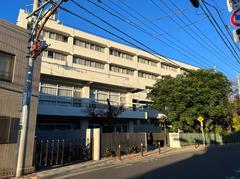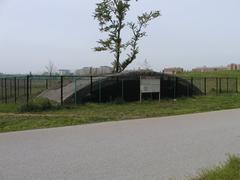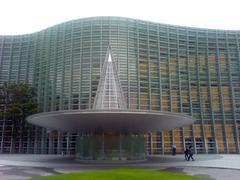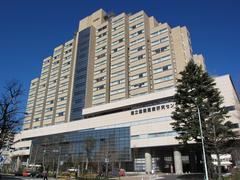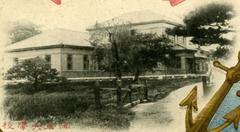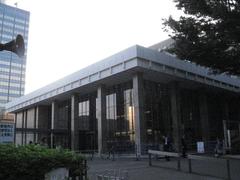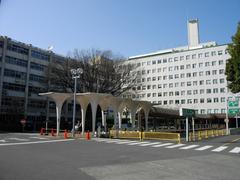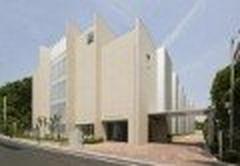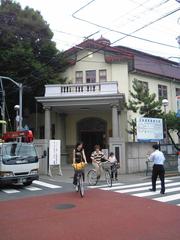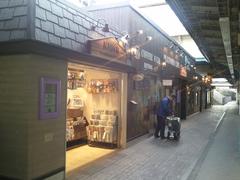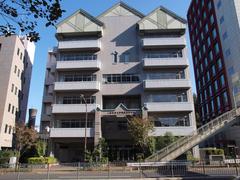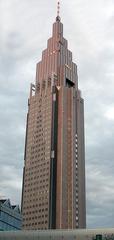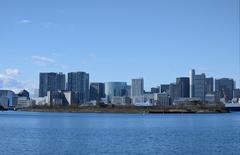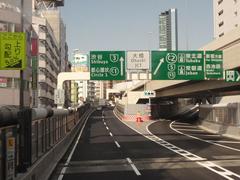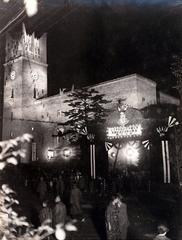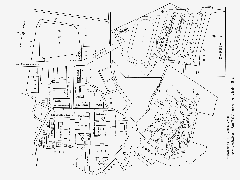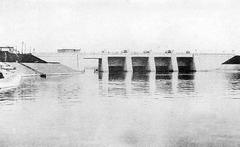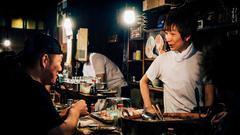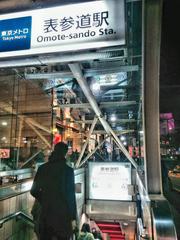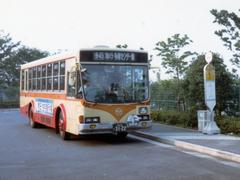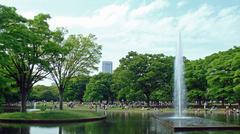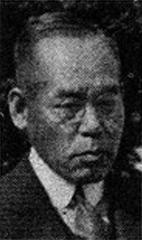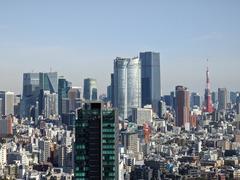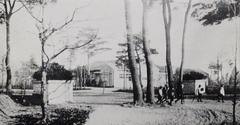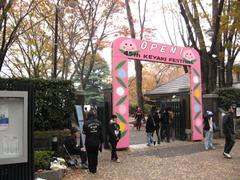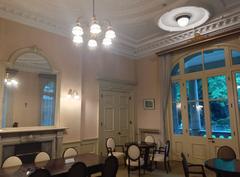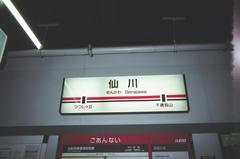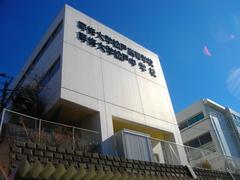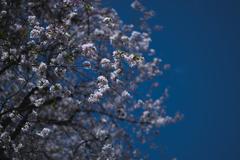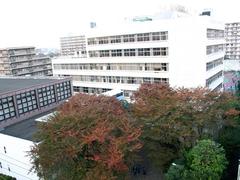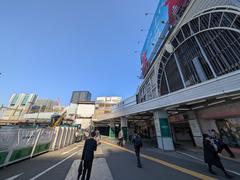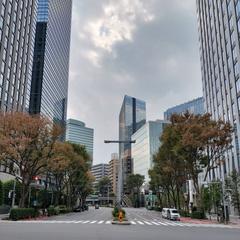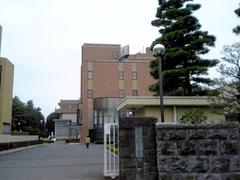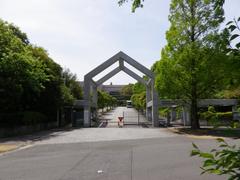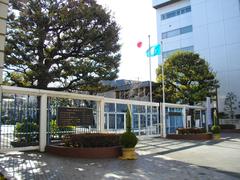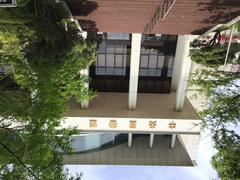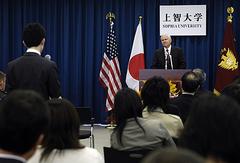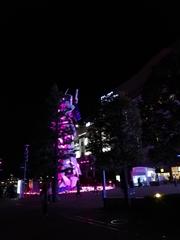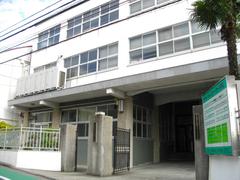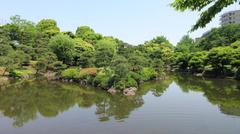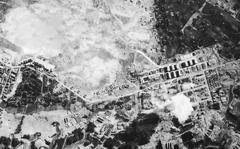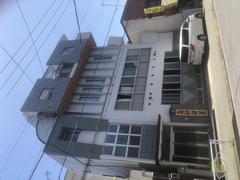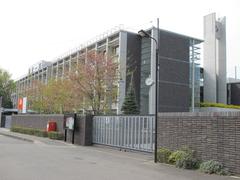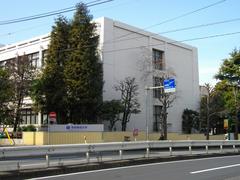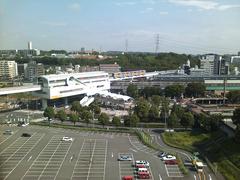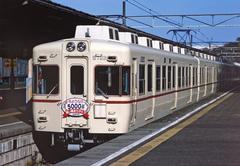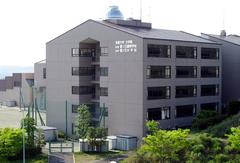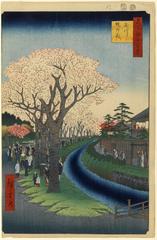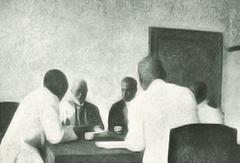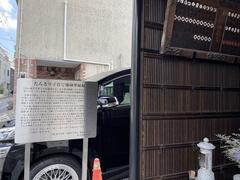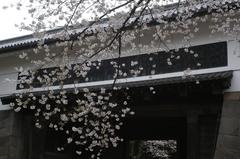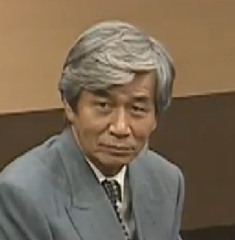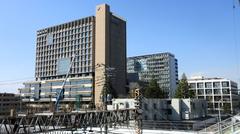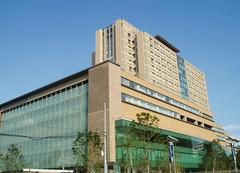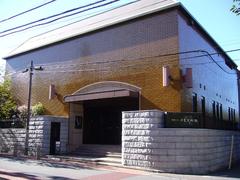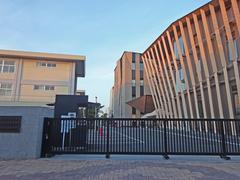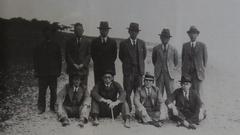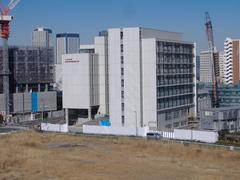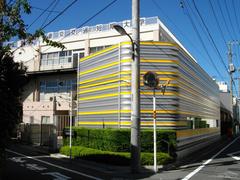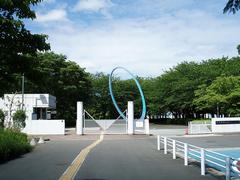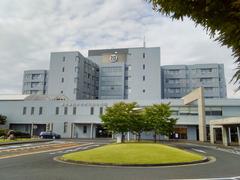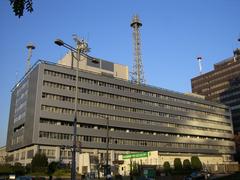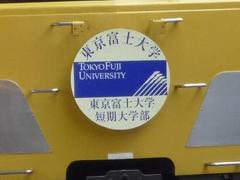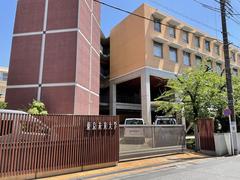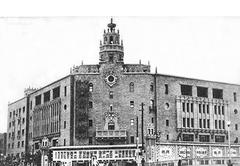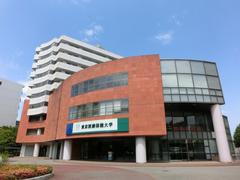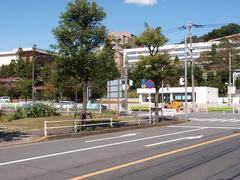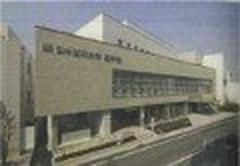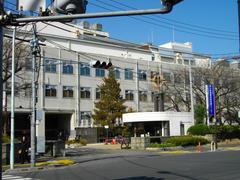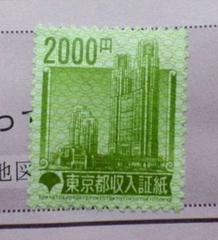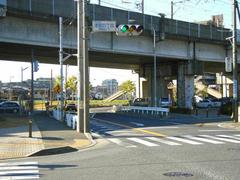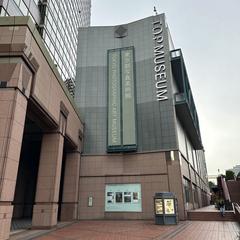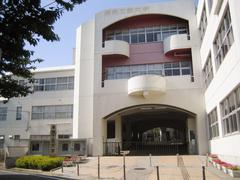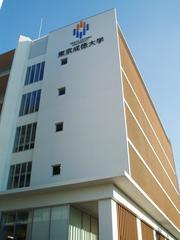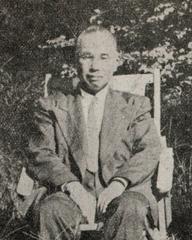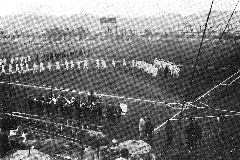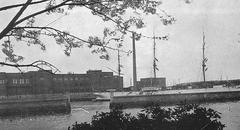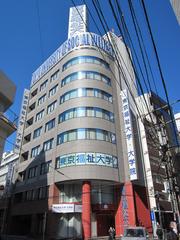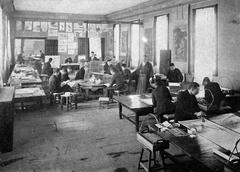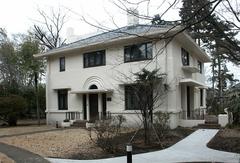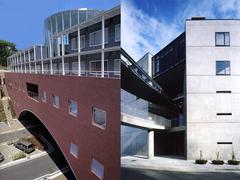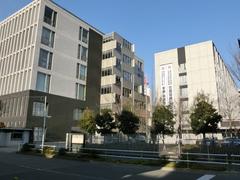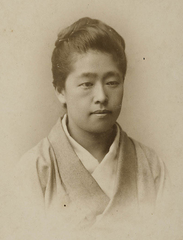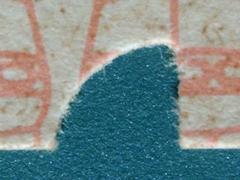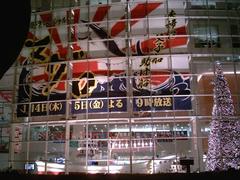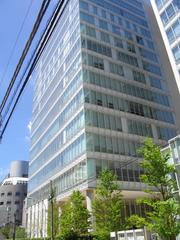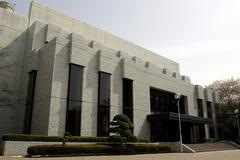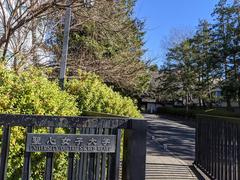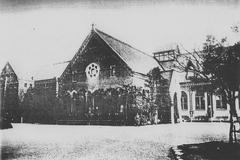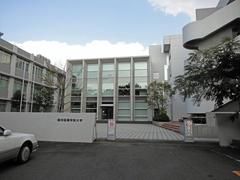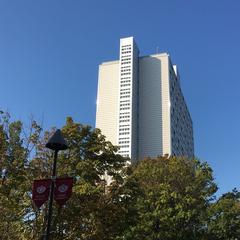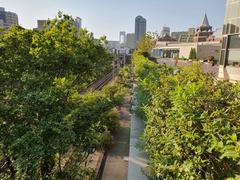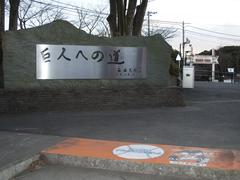
Museum of Modern Japanese Literature: Visiting Hours, Tickets, and Guide to Tokyo Historical Sites
Date: 15/06/2025
Introduction
Nestled in the peaceful environs of Komaba Park in Tokyo’s Meguro City, the Museum of Modern Japanese Literature (日本近代文学館, Nihon Kindai Bungakukan) stands as a preeminent institution dedicated to the preservation, celebration, and study of Japan’s literary achievements from the Meiji period (1868–1912) to the present. Since its founding in 1967, the museum has played a pivotal role in safeguarding invaluable manuscripts, rare books, personal letters, and literary artifacts, enabling visitors and scholars to explore the evolution of Japanese literature amid sweeping historical and social changes (NCC Japan Guide; Japan Travel Navitime).
Boasting more than one million items, including works from renowned authors such as Ryūnosuke Akutagawa, Natsume Sōseki, Yukio Mishima, and Yasunari Kawabata, the museum serves as both a significant research hub and a welcoming space for the general public. Through rotating exhibitions, public programs, and digital archives, it offers unparalleled insights into modern Japanese literature and its connection to Tokyo’s broader historical and cultural landscape (Go Tokyo; TokyoMK Guide).
This guide provides all the essential information for planning your visit, including historical background, ticketing, accessibility, travel tips, and nearby attractions, ensuring a rewarding and enriching experience at one of Tokyo’s most significant cultural sites (Official Museum Site).
Table of Contents
- Introduction
- Historical Background and Development
- Permanent Collections
- Temporary and Thematic Exhibitions
- Exhibition Spaces and Visitor Experience
- Visitor Information
- Visuals and Media
- FAQ
- Call to Action
- Conclusion
- References
Historical Background and Development
Founding and Early Mission
The Museum of Modern Japanese Literature was established in April 1967 in response to growing concerns over the preservation of Japan’s modern literary legacy, especially as rapid modernization risked the loss of invaluable manuscripts and documents. The museum’s creation was made possible through the collective support of over 15,000 donors, including writers, scholars, and private citizens, reflecting Japanese society’s deep reverence for its literary heritage (NCC Japan Guide).
Growth of the Collection
Since its inception, the museum’s holdings have grown to over 1,070,000 items, making it one of the largest literary archives in Japan. Its comprehensive collection features:
- Handwritten manuscripts and drafts
- Personal letters and diaries
- First editions and rare books
- Literary magazines and journals
- Photographs, videos, and artifacts
Noteworthy are the manuscripts by Ryūnosuke Akutagawa and correspondence from Yasunari Kawabata, the museum’s first honorary director, alongside materials from over 150 modern Japanese authors (Japan Travel Navitime; Go Tokyo).
Expansion and Modernization
In 2007, a branch library was opened in Narita City, Chiba Prefecture, to accommodate the expanding collection. The museum has invested in digitizing its archives, making many documents accessible online and aiding the preservation of fragile materials (NCC Japan Guide).
Role in Japanese Literary Culture
Distinct among Japan’s many literary museums, the Museum of Modern Japanese Literature serves as a national center tracing the evolution of literature from the late 19th century onward. Its archives document critical periods, such as the Meiji Restoration, wartime censorship, and postwar reconstruction, providing invaluable resources for understanding literature’s role in shaping Japanese identity (National Centre for Writing; Facing History).
Notable Exhibitions and Public Engagement
The museum mounts approximately five major rotating exhibitions annually, including retrospectives and international showcases. These exhibitions highlight key trends, figures, and the intersections of literature with society and the arts. Public spaces such as reading rooms and a café enhance the visitor experience, while outreach programs and workshops foster literary appreciation among diverse audiences (Go Tokyo).
Architectural and Locational Significance
Strategically located in Komaba Park, the museum is surrounded by cultural and academic institutions. Its design balances preservation needs with public accessibility, featuring dedicated exhibition halls, reading rooms, and archival storage. Visitors can also explore the nearby Maeda Residence, a historic samurai home, further enriching the cultural context (Go Tokyo).
Institutional Impact and Legacy
Since opening, the museum has played a crucial role in advancing the study and appreciation of modern Japanese literature. Its adaptation to technological advances and expansion of digital access underline its commitment to education and preservation for future generations (National Centre for Writing).
Key Milestones
- 1963: Incorporated foundation established
- 1967: Official opening in Komaba Park, Tokyo
- 2007: Narita branch library opened
- 2022: Collection surpasses 1,070,000 items
Permanent Collections
Literary Manuscripts and First Editions
The museum’s core strength lies in its extensive manuscript and first edition holdings. Highlights include original drafts and annotated copies of works by Natsume Sōseki, Ryūnosuke Akutagawa, Osamu Dazai, Yukio Mishima, and Yasunari Kawabata. These materials, often displayed in rotation to protect their condition, chart the creative evolution of modern Japanese literature.
Author Archives and Personal Effects
Beyond manuscripts, the archives encompass personal diaries, photographs, writing implements, and even clothing, offering intimate glimpses into the daily lives of Japan’s literary icons.
Literary Magazines and Periodicals
The library houses rare literary magazines such as “Bungakukai,” “Shincho,” and “Chūō Kōron,” which illuminate trends and debates in Japanese literary circles from the late 19th century onward.
Rare Books and Special Collections
Specialists and enthusiasts will find a treasure trove of rare books, early printings, and curated collections focusing on women writers, minority voices, and avant-garde movements.
Temporary and Thematic Exhibitions
Rotating Special Exhibitions
Several times each year, the museum features themed exhibitions spotlighting individual authors, literary movements, or historical topics. These often include multimedia displays and interactive elements, with panels in Japanese and some English summaries.
Anniversary and Commemorative Events
Major literary anniversaries are commemorated through special exhibitions and events, which provide access to unpublished manuscripts and unique memorabilia.
Collaborative and Traveling Exhibitions
The museum collaborates with domestic and international institutions, sharing Japanese literary heritage through joint exhibitions and global outreach.
Exhibition Spaces and Visitor Experience
Main Exhibition Hall
The main hall, designed with the ambiance of a traditional Japanese study, offers rotating displays from the permanent collection. Visitors can use magnifying glasses and digital tools to explore the artifacts in detail.
Thematic Galleries
These galleries, dedicated to genres, periods, or literary themes, are regularly updated to reflect new research and recent acquisitions.
Interactive and Multimedia Displays
Touchscreens and audio-visual stations offer digitized manuscripts, interviews, and documentaries, enhancing accessibility for all visitors.
Reading Room and Library
The public reading room grants access to over 400,000 volumes, including critical studies and biographies. Digital surrogates of rare materials are also available for onsite consultation.
Visitor Information
Visiting Hours and Tickets
- Hours: Tuesday–Sunday, 10:00 AM–5:00 PM (last admission: 4:30 PM)
- Closed: Mondays (or following day if Monday is a national holiday), New Year’s holidays, and for exhibition changes (Official Museum Site)
- Admission: Adults ¥500; university students ¥300; high school students and younger free. Special exhibitions may require an additional fee. Tickets are available at the entrance or online.
Directions and Access
- Address: 1-10-30 Komaba, Meguro-ku, Tokyo 153-0041, Japan
- Nearest Station: Komaba-Todaimae Station (Keio Inokashira Line), 5-minute walk from the station. From Shibuya, the museum is a quick 10-minute ride.
- Parking: Limited; public transport is strongly recommended.
Accessibility and Visitor Services
- Fully wheelchair accessible with ramps, elevators, and accessible restrooms.
- Audio guides (Japanese and English) available for a small fee.
- Staff can assist visitors with special needs; advance notice is appreciated for specialized support.
- Tactile maps and Braille materials are available upon request.
- Service animals are welcome.
Facilities
- Lockers: Coin-operated near the entrance.
- Restrooms: Clean and accessible, available on each floor.
- Museum Shop: Offers books, literary-themed items, and souvenirs.
- Reading Rooms: Open to the public for research and leisure reading (some materials require reservation).
- Vending Machines: Light snacks and drinks; Komaba Park is ideal for picnics.
Nearby Attractions
- Komaba Park: Serene grounds perfect for a stroll before or after your museum visit.
- Maeda Residence: A historic samurai home adjacent to the museum, showcasing Meiji and Taishō period architecture.
- University of Tokyo – Komaba Campus: Rich in academic and cultural history.
- Koishikawa Korakuen Garden: One of Tokyo’s oldest and most beautiful gardens, a short journey away.
Visitor Tips
- Best times: Weekday mornings to avoid crowds.
- Language: Many exhibits are in Japanese; English summaries and audio guides are available.
- Photography: Prohibited in exhibition areas, but allowed in designated spots.
- Quiet atmosphere: Maintain a respectful demeanor, especially in reading rooms.
- Advance reservations: Recommended for workshops or archival research.
- Check the museum’s events page for lectures, workshops, and special exhibition updates (museum’s events page).
Seasonal Considerations
Spring and autumn are particularly attractive times to visit, with cherry blossoms and fall foliage in Komaba Park. Outdoor literary events may be held during these seasons, enhancing the cultural experience.
Safety and Etiquette
- No food or drinks in exhibition areas.
- Keep mobile phones on silent.
- Security staff are present to ensure a safe environment.
Visuals and Media
High-quality images, virtual tours, and interactive content are available on the museum’s official website, giving visitors a preview of exhibitions and facilities. These visuals are tagged with SEO keywords such as “Museum of Modern Japanese Literature exhibits” and “Tokyo historical sites.”
Frequently Asked Questions (FAQ)
Q: What are the Museum of Modern Japanese Literature’s visiting hours?
A: Tuesday–Sunday, 10:00 AM–5:00 PM; closed Mondays and holidays.
Q: How can I buy tickets?
A: At the museum entrance or online via the official website.
Q: Is the museum wheelchair accessible?
A: Yes, with ramps, elevators, and accessible restrooms.
Q: Are guided tours available?
A: Japanese tours are offered regularly; English group tours can be booked in advance.
Q: Can I take photographs inside the museum?
A: Photography is generally not allowed in exhibition rooms, but permitted in designated areas.
Q: Are audio guides available?
A: Yes, in both Japanese and English, for a small fee.
Q: Is there a gift shop?
A: Yes, offering books, souvenirs, and literary-themed merchandise.
Call to Action
Plan your visit to the Museum of Modern Japanese Literature to experience the depth and dynamism of Japan’s literary tradition. For the latest on exhibitions, ticketing, and special events, consult the official website. Enhance your museum experience with the Audiala app for guided tours and audio content, and follow us on social media for news and updates about Tokyo’s cultural sites.
Conclusion
The Museum of Modern Japanese Literature offers a comprehensive window into Japan’s literary heritage, presenting meticulously preserved collections in an accessible, visitor-friendly setting. With a rich program of permanent and temporary exhibitions, educational resources, and proximity to other historical sites, the museum is an essential destination for anyone interested in Japanese culture, history, or literature. Use this guide to plan your visit and immerse yourself in the stories and ideas that have shaped modern Japan.
References
- Visiting the Museum of Modern Japanese Literature in Tokyo: Hours, Tickets, and History, 2024, NCC Japan Guide (NCC Japan Guide)
- Museum of Modern Japanese Literature: Visiting Hours, Tickets & Cultural Insights in Tokyo, 2024, TokyoMK Guide (TokyoMK Guide)
- Museum of Modern Japanese Literature in Tokyo: Collections, Exhibitions, Visiting Hours, Tickets & Visitor Guide, 2024, Japan Travel Navitime (Japan Travel Navitime)
- Museum of Modern Japanese Literature Visiting Hours, Tickets, and Visitor Guide in Tokyo, 2024, Official Museum Site (Official Museum Site)
- Exploring Japan’s Literature Museums, 2023, National Centre for Writing (National Centre for Writing)
- Origins of Modern Japanese Literature, 2020, Kōjin Karatani, Duke University Press (Duke University Press)
- Museum of Modern Japanese Literature, Go Tokyo (Go Tokyo)
- Timeline of Events in Japan, Facing History (Facing History)


